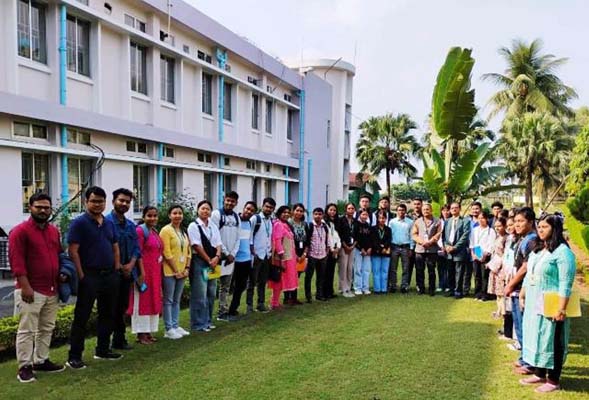Tripura's Horticultural Renaissance: Unleashing Potential amidst Challenges

Agartala, Dec 03, 2024, By Our Correspondent
In the field of horticulture, the northeastern Indian state of Tripura is showing great promise. Mango, pineapple, orange, jackfruit, banana, litchi, lemon, papaya, sapota, musambi, guava, and dragon fruit are among the many crops grown in the state, which is popular due to its fertile soil and pleasant environment. With a productivity rate of 9.96 metric tons (MT) per hectare, Tripura's horticultural sector, this occupies 58,186 hectares, yields an astounding 579,245 MT of crops yearly.Dr. Burhan U. Choudhury, Principal Scientist and Head of the ICAR-Regional Center in Tripura, recently highlighted the enormous potential and urgent challenges in the state's horticulture sector during an institutional visit by students from Tripura University's Economics Department.Dr. Choudhury emphasized the critical need for maintaining older orchards to address the sector’s challenges. He underscored the importance of timely training and pruning, proper fertilizer distribution, and adequate water availability based on specific requirements. “Farmers who own and maintain orchards must adopt these measures to maximize productivity and sustain their livelihoods,” he stated.Highlighting the unique suitability of Tripura’s soil for horticultural crops, Dr. Choudhury called for increased government support to enhance seed production and distribution. He stressed the importance of introducing certified, high-quality seeds through well-organized institutional frameworks. “Government intervention is crucial for establishing a robust seed production system, which will empower farmers and elevate Tripura’s horticulture sector,” he added.The discussion illuminated the pivotal role horticulture plays in Tripura’s economic and agricultural development. With the state’s natural advantages, addressing existing challenges can position Tripura as a leading hub for horticultural excellence in the region. The proactive measures outlined during the visit provide a strategic roadmap for sustainable growth, promising better livelihoods for farmers engaged in this vital sector